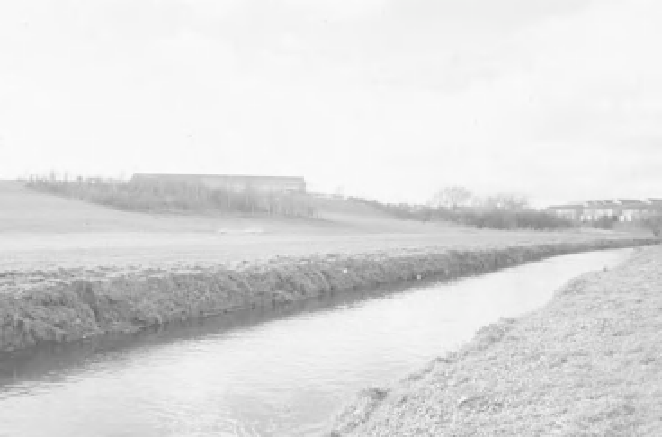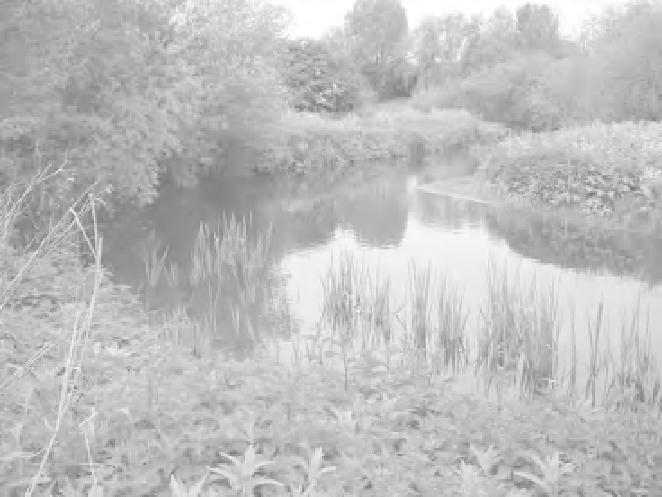Geoscience Reference
In-Depth Information
(a)
(b)
Figure 20.2
(a) River Skerne in
1994, before rehabilitation (Photo:
Environment Agency); (b) the same
site in 2007, 11 years after
rehabilitation (Photo: Ulrika Aberg).
Construction of the new channel began in
July 1995. Infrastructure and industrial waste
deposits limited the ambitions for rehabilitation; for
example, re-meandering was restricted by adjacent
contaminated land and a major gas pipeline buried
alongside the river (Vivash
et al.
, 1998). Where
new meanders were cut, part of the old channel
was used to create two backwaters. As a flood-
water retention measure to protect higher ground
from flooding, about 25 000 m
3
removed from the river banks. Lowering the
bank increased the lateral connectivity between
the river channel and adjacent floodplain, with
the excavated material used for landscaping
purposes. A new footbridge was constructed at the
downstream end of the section; it was designed
to resemble a steam locomotive, emphasizing the
historical significance of the Skerne railway bridge.
Figure 20.2 shows the River Skerne before and after
rehabilitation.
of material was



